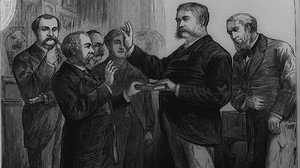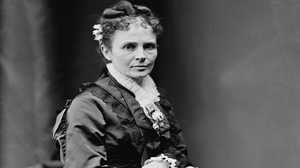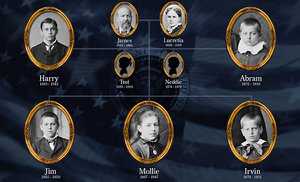The U.S. President has not always had people protecting him. In the country's early years, many people believed the young democratic republic was immune to political violence. Dictators and heirs of succession had been assassinated for decades in other nations, including six successful assassinations out of more than 14 attempts since the 1860s in Europe and South America, but Americans believed their nation to be free of the corruptions of the Old World. After all, America was a democratic republic where people could vent dissatisfaction through their vote, rather than resorting to political violence. The White House was even relatively open; only one policeman and a secretary stood between the president and Pennsylvania Avenue.
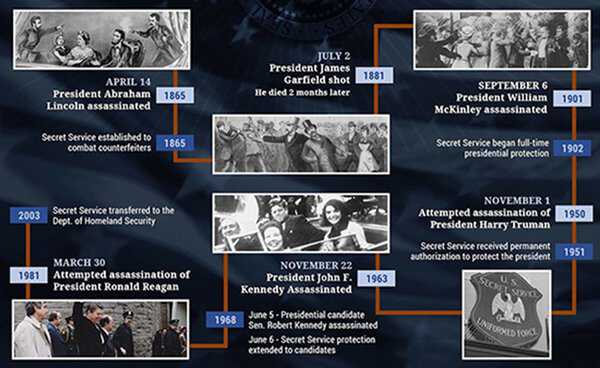
In 1865, President Abraham Lincoln's murder, though shocking and horrific, was thought by many to be a fluke -- a final tragic chapter to the Civil War, a singular event in American history that surely would not be repeated.
On July 2, 1881, while walking through the Baltimore and Potomac train station, President James Garfield had no police detail or personal bodyguards, just the company of two of his sons and his Secretary of State James Blaine, when he was shot twice by Charles Guiteau. Garfield survived for the following 79 days, and with no clear instruction given in the United States Constitution and no precedent dictating when a president might be deemed incapable of carrying out his duties, the United States was effectively left without an acting president. Vice President Arthur refused to take office while Garfield was alive, even two months into Garfield's convalescence. When Garfield died on the evening of September 19, Secretary of State Blaine and the cabinet members present sent a formal telegram to Vice President Arthur asking him to be sworn in as president with all haste. Four hours after the death of Garfield, the nation finally had a new president. It was not until 1967 and the ratification of the 25th Amendment to the Constitution that a formal process was outlined for presidential succession in case of presidential disability.
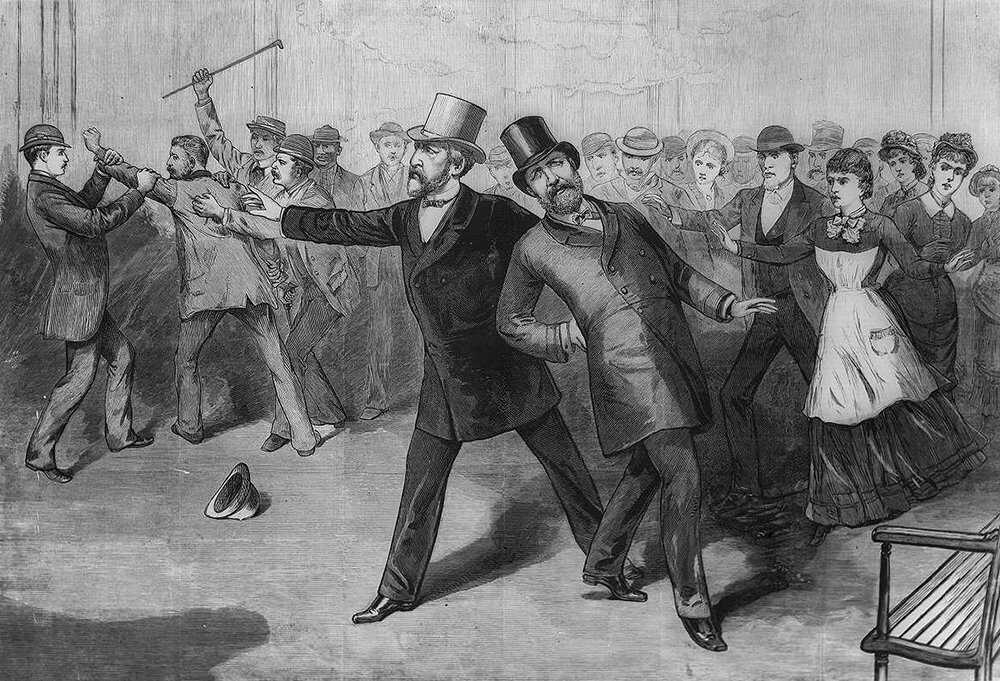
It would take a third presidential assassination, the murder of President William McKinley in 1901, for Congress to assign the task of presidential protection to a government agency. The Secret Service, originally created to combat the counterfeiting of U.S. currency in the 1860s, thus became officially empowered to protect the president. In 1902, the Secret Service created its first full time White House detail. Over the years, Congress expanded the mission of the Secret Service from the protection of the president to the protection of the president's family and the vice president. By the time President John F. Kennedy was shot in 1963, former presidents and their families were also given protection after leaving office, and after President Kennedy's murder, the period of protection for the family of a former president was extended.
After the 1968 murder of Senator Robert F. Kennedy, Congress put the Secret Service in charge of protection of major candidates for the presidency. In 1985, President Ronald Reagan became the first president to transfer his duties as president to his vice president, George H.W. Bush, who served as acting president for eight hours while Reagan underwent surgery. In 2007, the Secret Service began protection for then-candidate Barack Obama, the earliest coverage for any candidate in history. Obama would go on to become the first African-American president of the United States.
View a table of American Presidential Assassinations.




